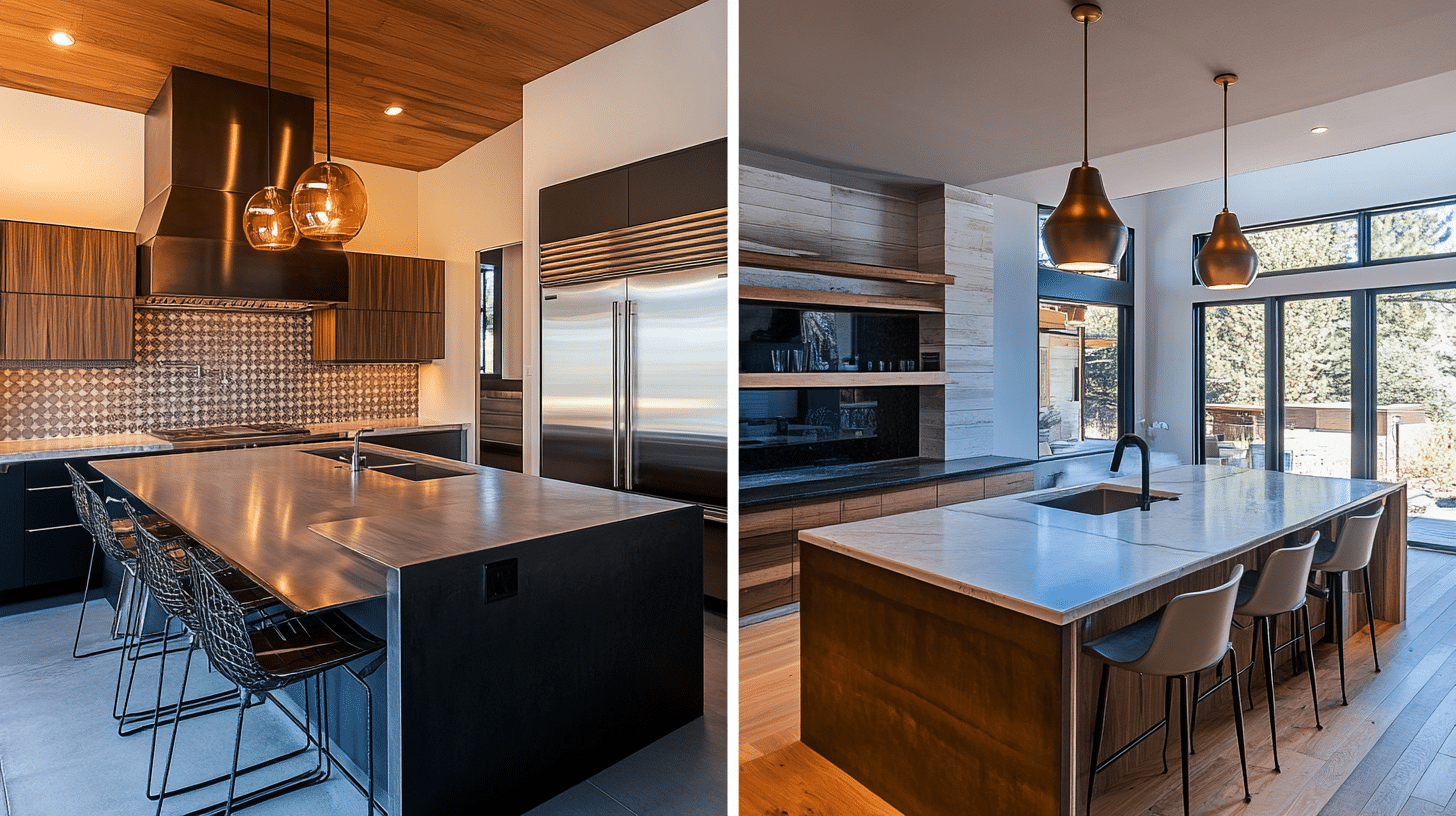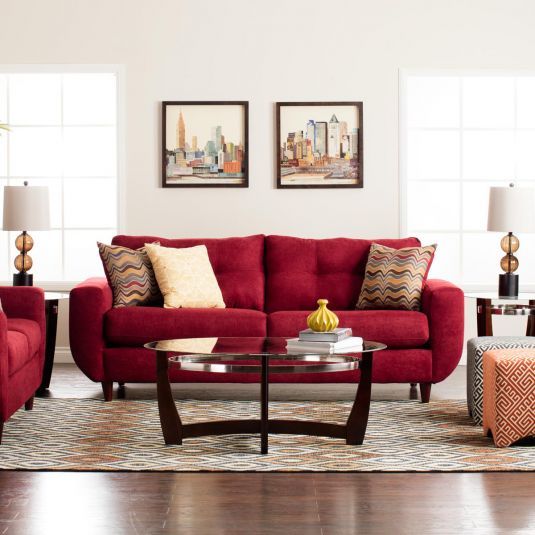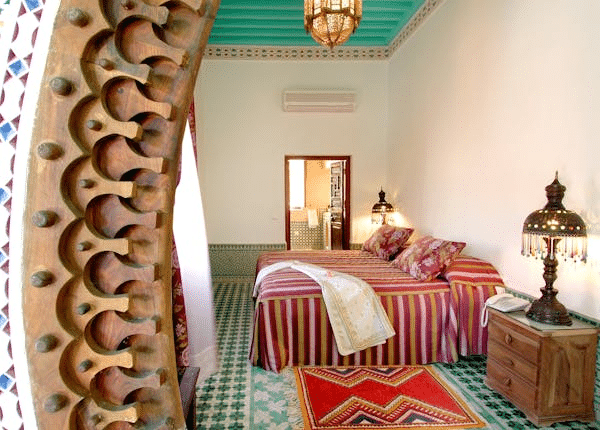Guide to Mixing Metals in Your Kitchen: Tips and Inspiration
Mixing metals in kitchen design has become increasingly popular, and for good reason.
I’ve seen how this approach can transform a cooking space, adding depth and character that a single metal finish can’t achieve.
In this guide, I’ll show you how to blend different metal elements in your kitchen effectively.
You’ll learn my top tips for selecting complementary finishes, balancing various tones, and incorporating mixed metals into your overall design.
I’ll also share advice on maintaining visual harmony and avoiding common pitfalls.
Whether you’re planning a complete kitchen overhaul or want to update your current space, I’ll help you confidently mix metals to create a stylish and personalized kitchen you’ll love.
Is Mixing Metals in Kitchen Design a Good Idea?
Using varied metal finishes in kitchen design is becoming more common and can add visual appeal and depth.
This method offers a fresh take on kitchen looks, moving away from the usual single-metal approach.
Carefully combining different metal elements can result in a kitchen that looks well-crafted and one-of-a-kind.
This technique gives homeowners more freedom to express their personal tastes, allowing them to create spaces that truly represent their style.
However, successfully blending metals requires thoughtful planning. The goal is to create a look that appears intentional and well-balanced.
When done correctly, using multiple metals can improve the overall look of a kitchen, making it more attractive and lively.
Top Metal Combinations for Your Kitchen
1. Stainless Steel and Brass
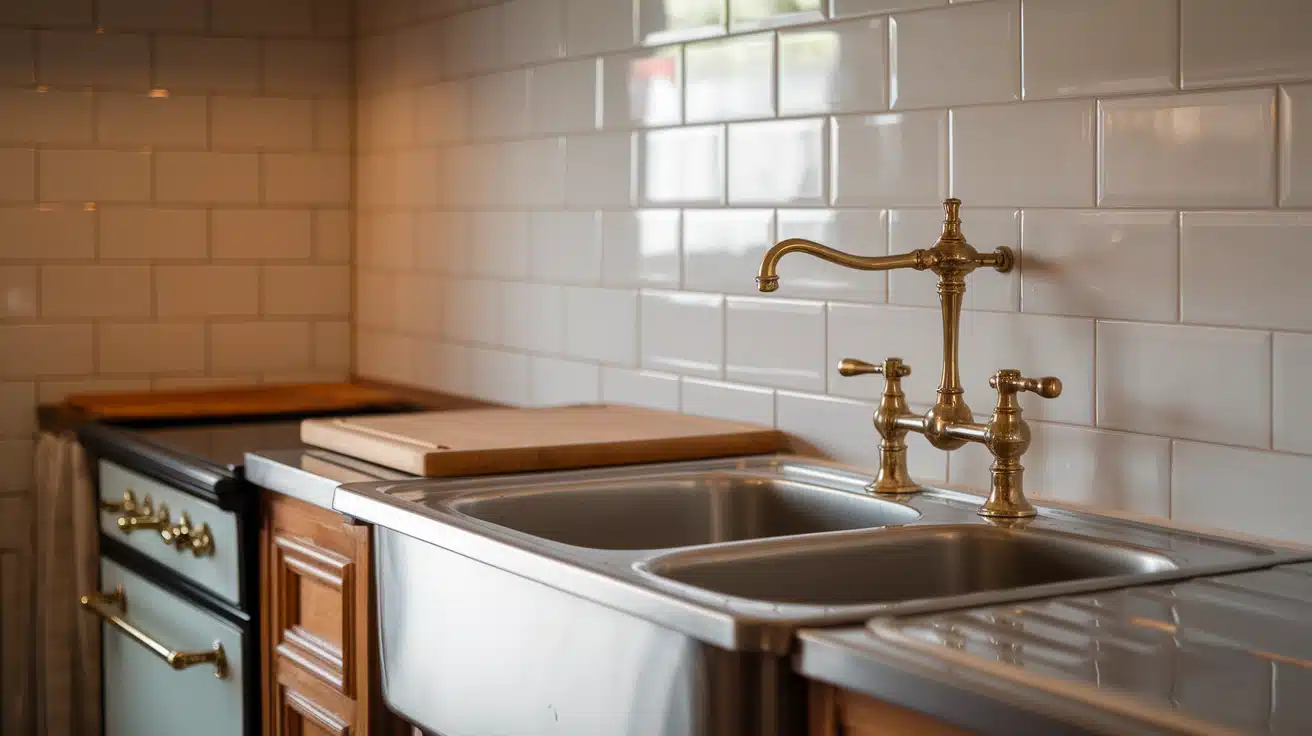
Stainless steel’s cool, sleek appearance contrasts beautifully with warm, classic brass. This combination brings together modern and traditional elements for a balanced kitchen design.
- Why It Works: The contrast between cool and warm tones creates a balanced, inviting atmosphere.
- Pro Tip: Use brass accents sparingly to avoid overwhelming the space.
2. Chrome and Copper
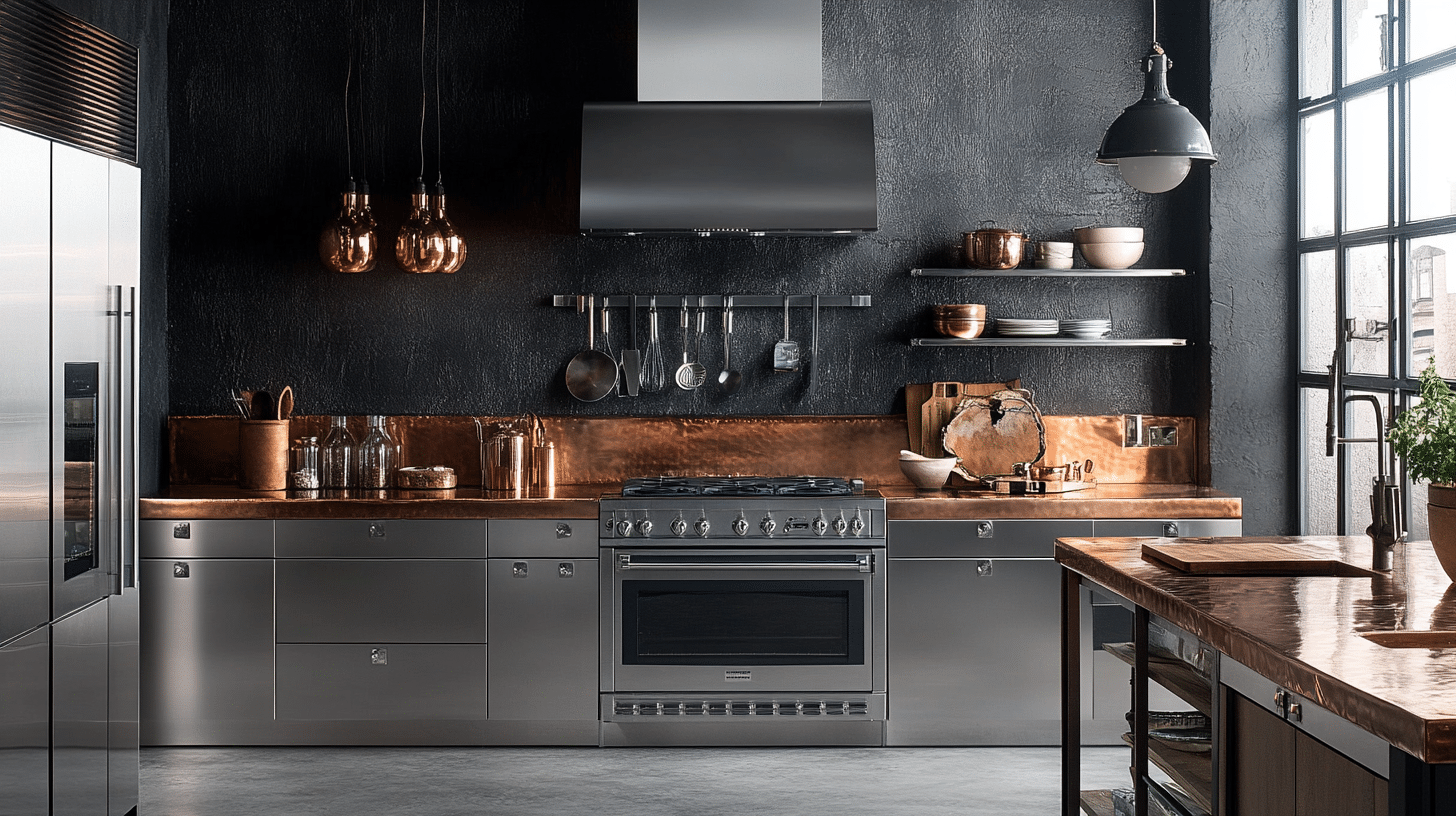
Chrome’s bright, modern sheen pairs wonderfully with copper’s rich, earthy tones. This duo adds a touch of glamour while maintaining a welcoming feel in the kitchen.
- Why It Works: The reflective qualities of both metals create a bright, lively kitchen.
- Pro Tip: Balance the warmth of copper with cool-toned countertops or backsplash.
3. Matte Black and Gold
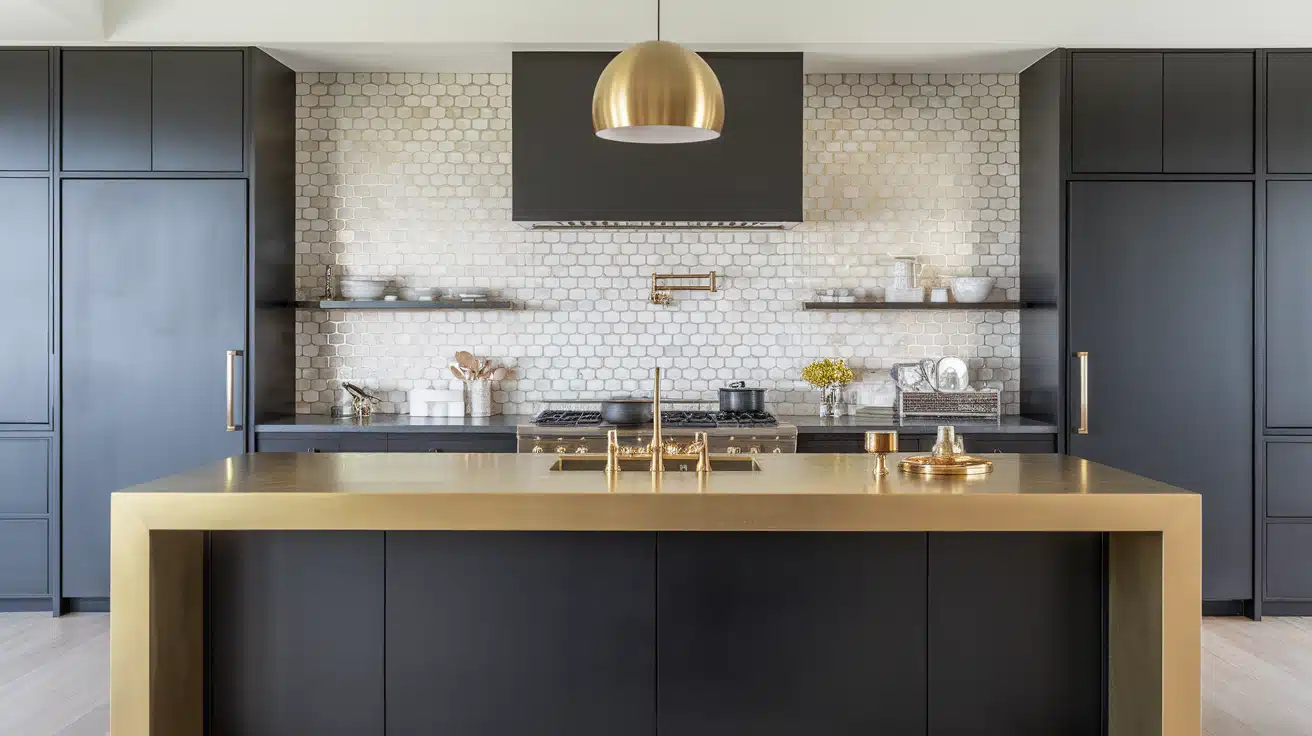
The bold, contemporary look of matte black creates a stunning backdrop for luxurious gold accents. This combination gives a polished look and makes a strong design statement.
- Why It Works: The contrast between matte black and gold elevates the space, creating a modern and luxurious atmosphere.
- Pro Tip: Use gold accents thoughtfully to avoid a flashy appearance.
4. Brushed Nickel and Bronze
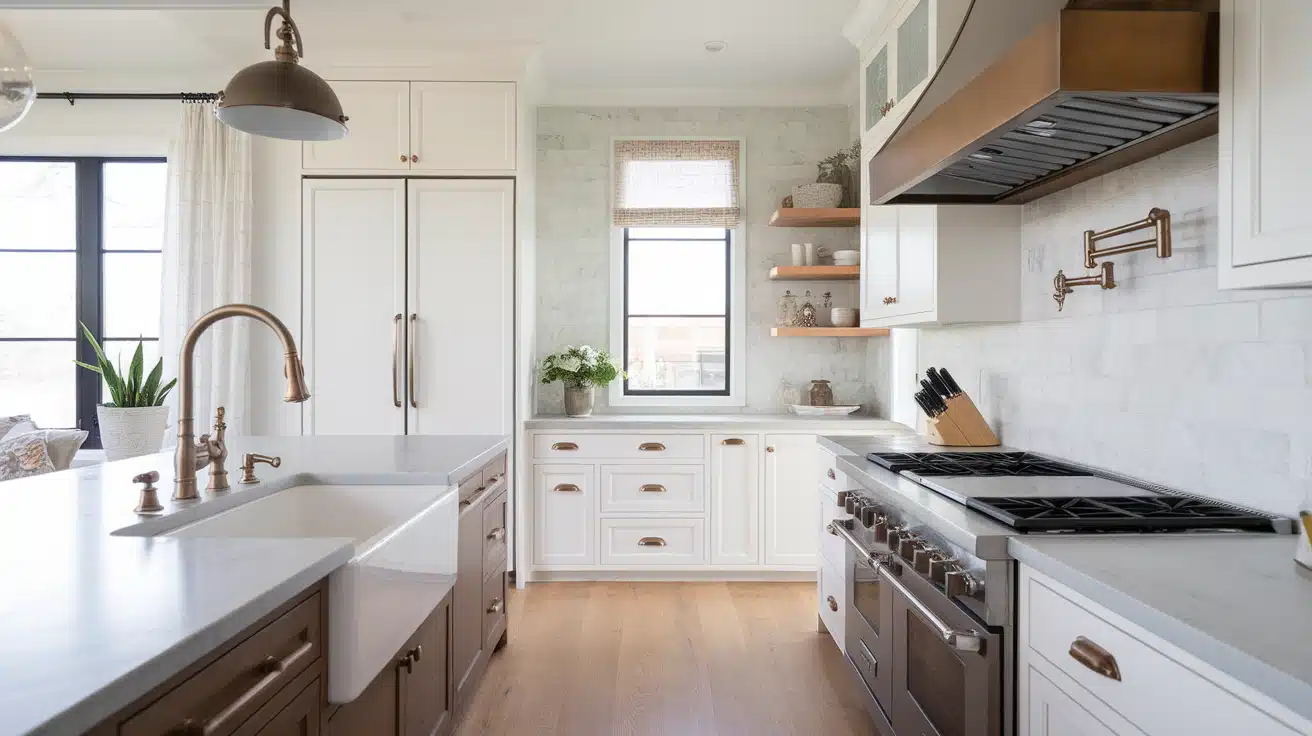
Subtle, versatile brushed nickel complements the warm, rustic appeal of bronze. This pairing offers a perfect blend of modern and traditional styles in the kitchen.
- Why It Works: The cool and warm tones mix adds depth, balancing contemporary and classic elements.
- Pro Tip: Choose bronze with a similar finish (brushed or matte) to maintain cohesion.
5. Pewter and Silver
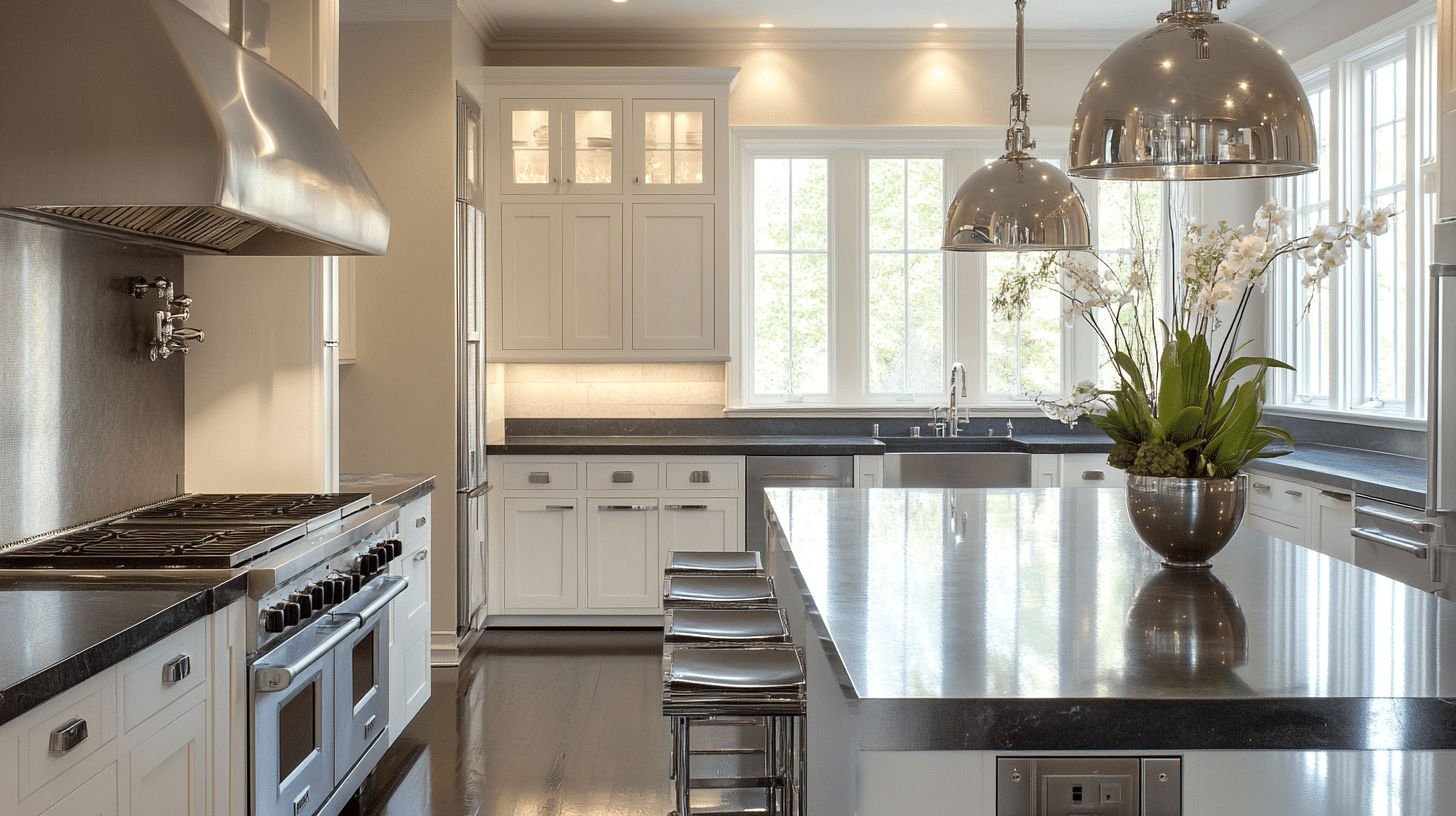
Soft, muted pewter creates a beautiful harmony with bright, reflective silver. This combination offers a sophisticated, monochromatic look with subtle variations in tone and shine.
- Why It Works: The interplay of matte and reflective finishes brings dimension, adding visual interest without overwhelming the design.
- Pro Tip: Add texture through different finishes to prevent a flat appearance.
6. Rose Gold and Brushed Steel
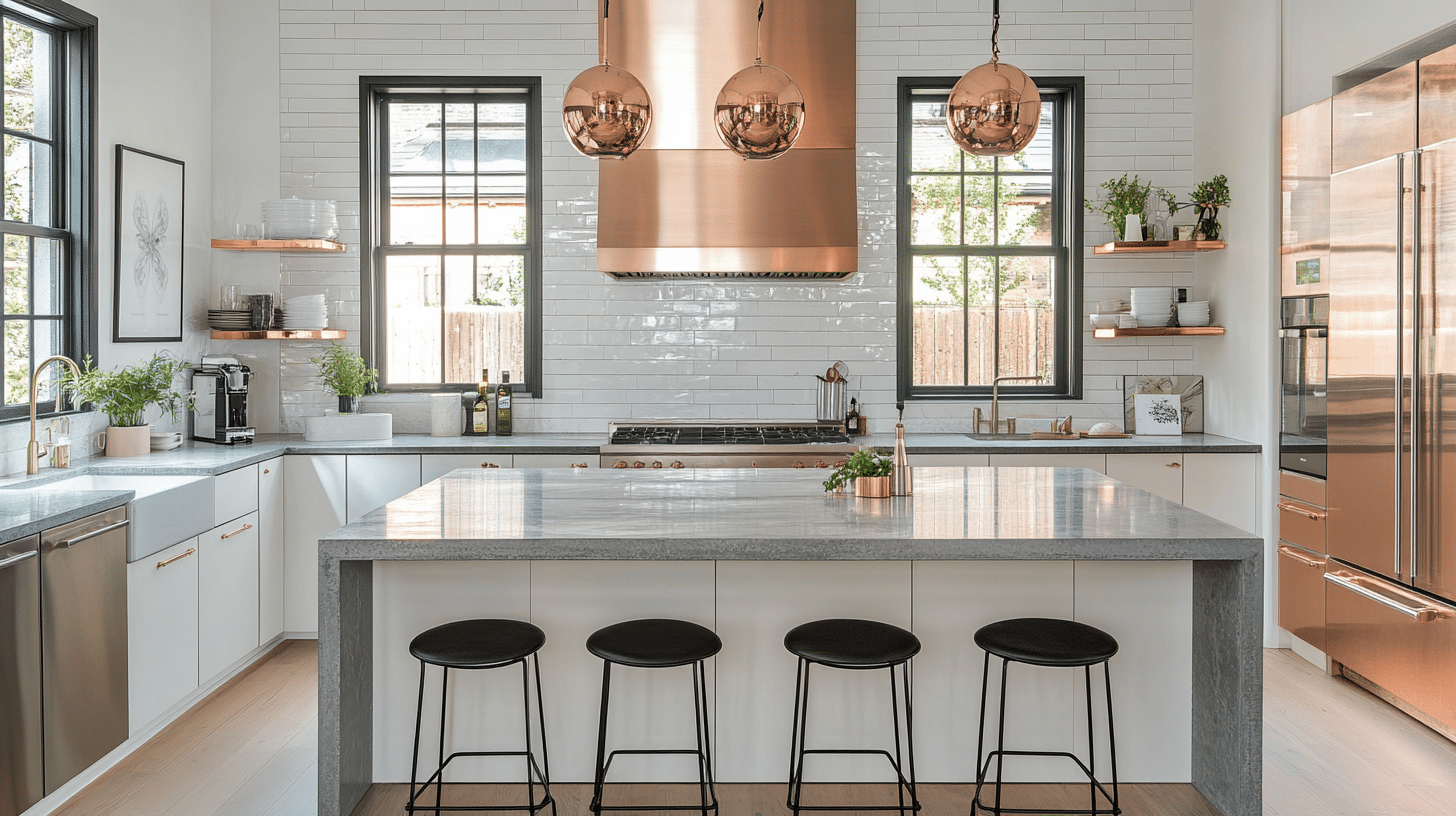
Rose gold’s warm, blush tones create a beautiful contrast with the cool, industrial look of brushed steel. This combination brings a touch of elegance to a modern kitchen design.
- Why It Works: The soft warmth of rose gold softens the industrial feel of brushed steel.
- Pro Tip: Use rose gold for smaller accents to avoid overwhelming the space.
7. Champagne Bronze and Stainless Steel
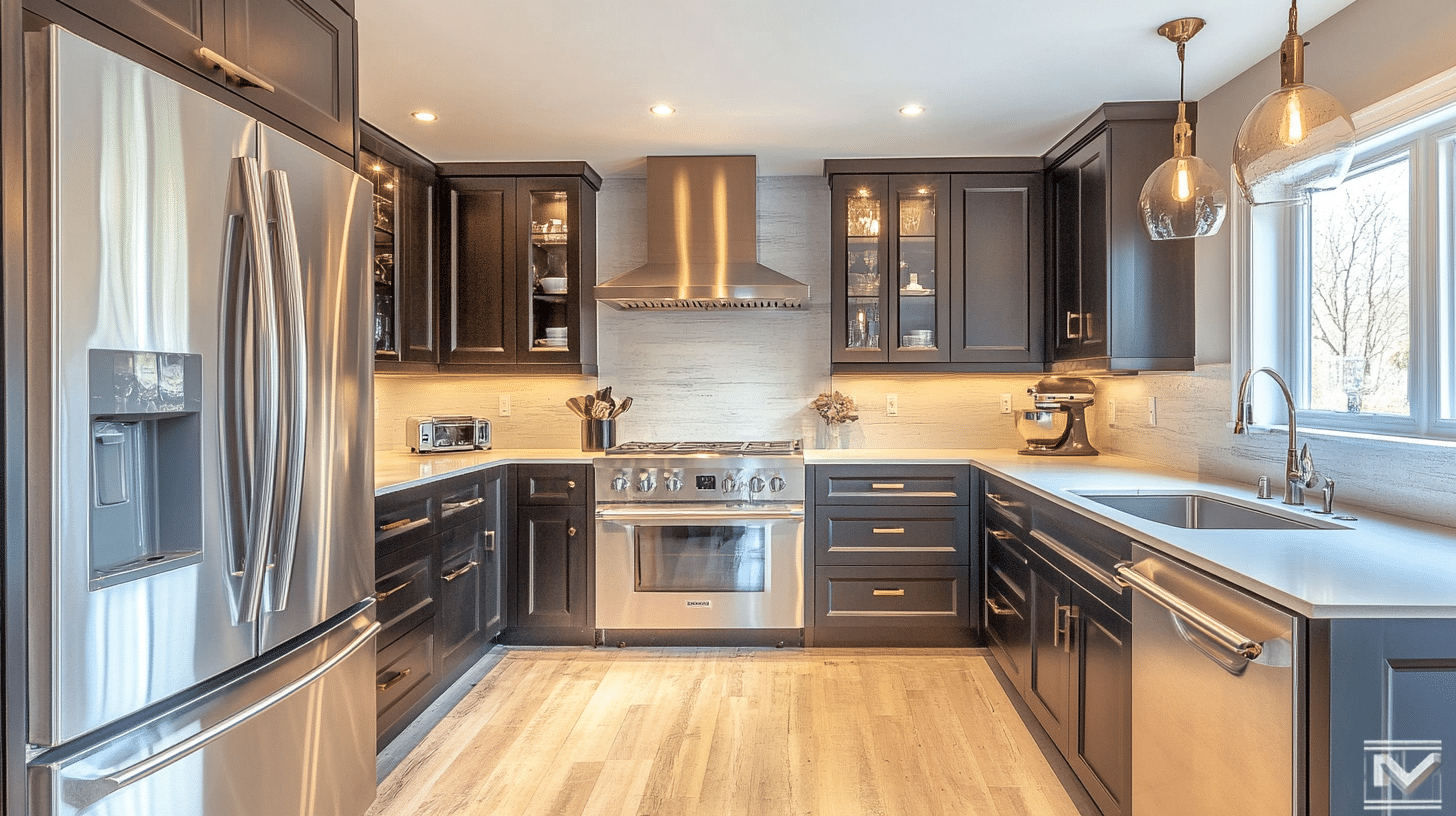
Champagne bronze offers a subtle, warm glow that pairs beautifully with stainless steel’s cool, sleek look. This combination creates a refined, upscale kitchen atmosphere.
- Why It Works: The warm undertones of champagne bronze soften the clinical feel of stainless steel.
- Pro Tip: Use champagne bronze for hardware and fixtures to add warmth to stainless steel appliances.
8. Brass and Black
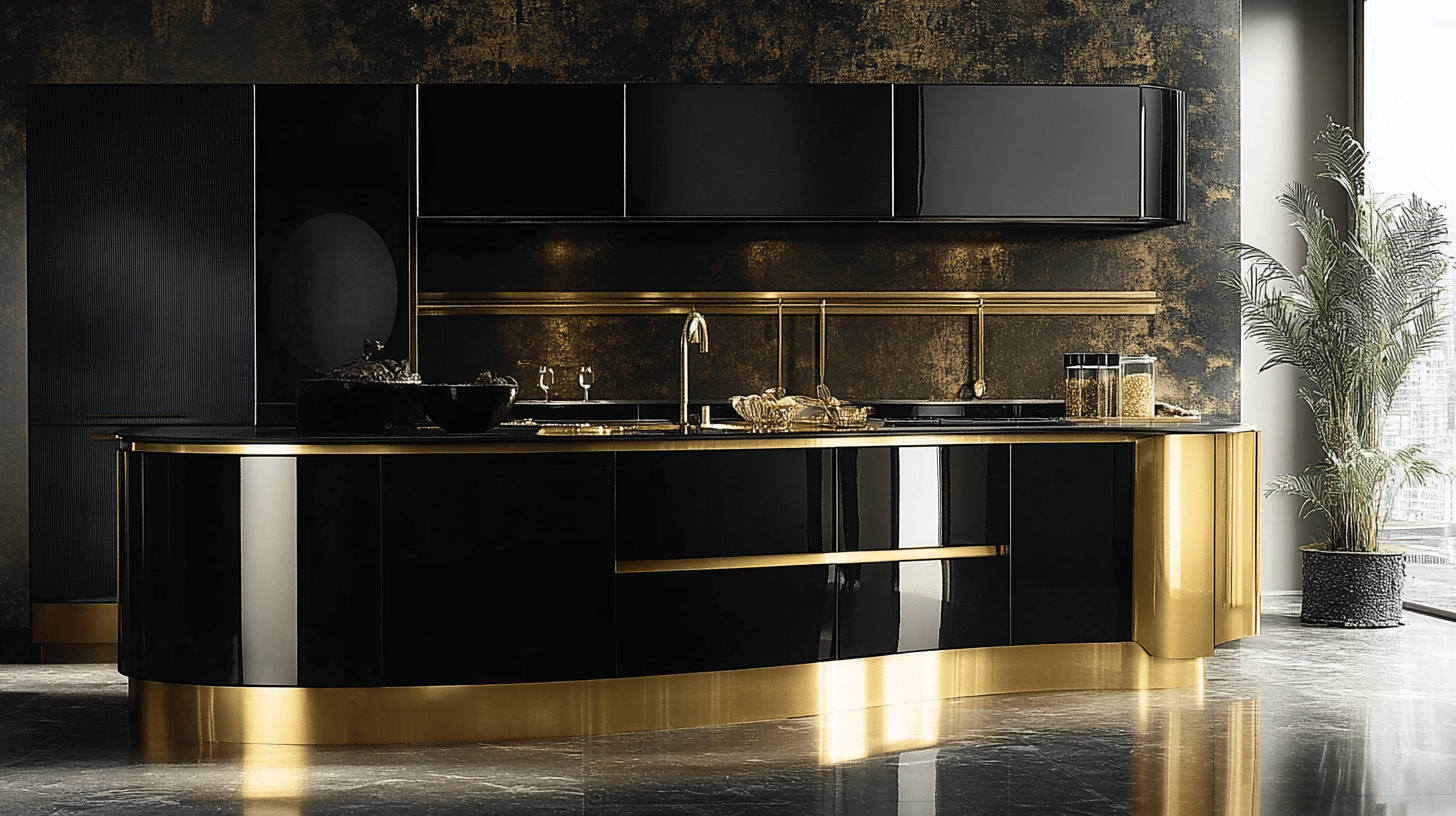
The warm, golden tones of brass create a stunning contrast with sleek, modern black. This combination brings a touch of luxury to a contemporary kitchen design.
- Why It Works: The warmth of brass softens the boldness of black, creating a balanced look.
- Pro Tip: Use black as the primary color and brass as accents for a modern, refined feel.
9. Chrome and Brass
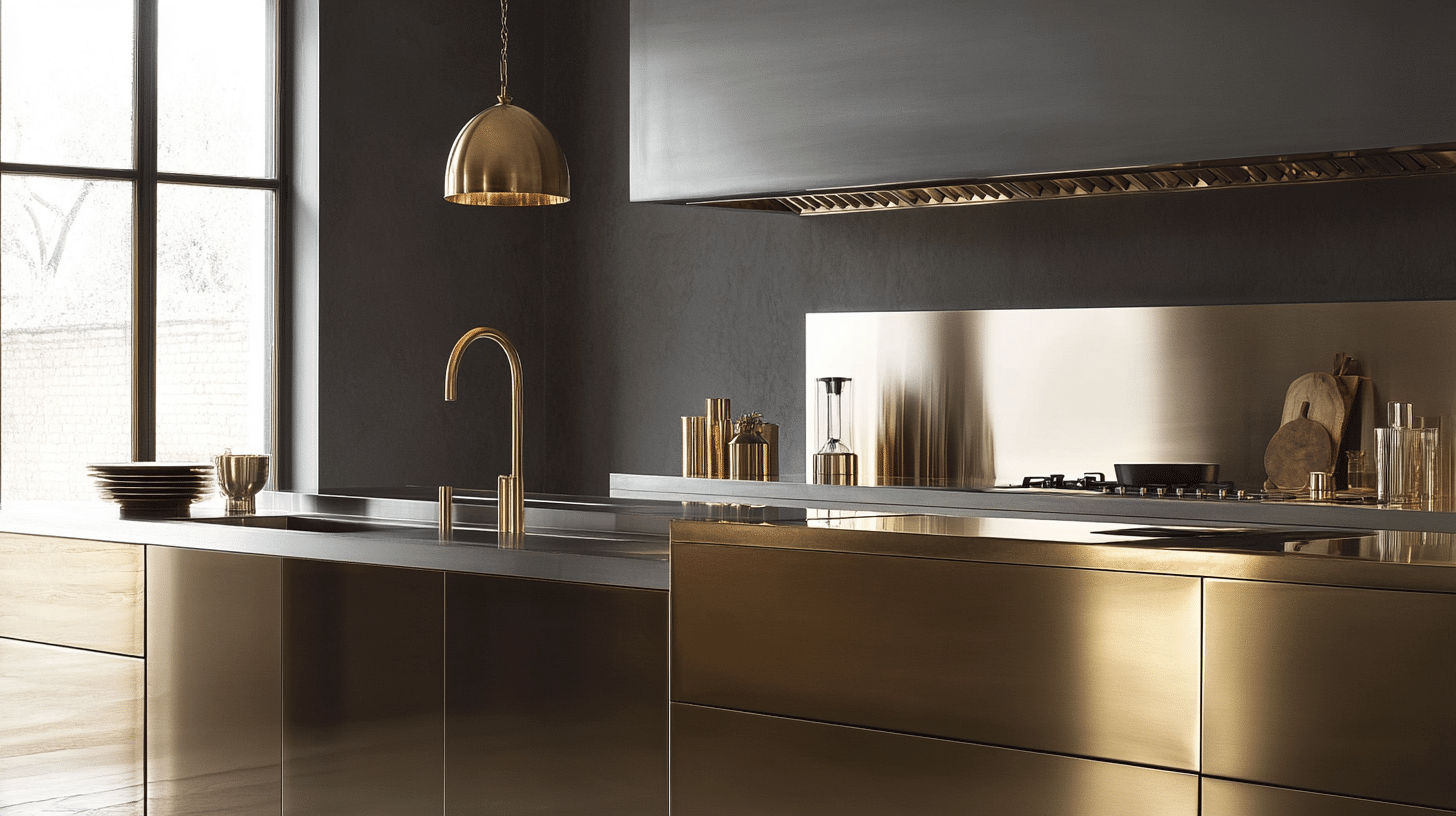
The cool, reflective surface of chrome pairs beautifully with the warm, golden hues of brass. This combination brings together contemporary and classic elements for a timeless kitchen design.
- Why It Works: The contrast between cool chrome and warm brass creates visual interest and depth.
- Pro Tip: Use chrome for larger surfaces and brass for smaller details to maintain balance.
Expert Tips for Successfully Mixing Metals in Your Kitchen
- Choose a dominant metal and limit your palette: Select one metal as your primary finish for larger elements, and stick to 2-3 metal finishes for a cohesive look. Too many metals can create a chaotic appearance.
- Consider undertones and finishes: Group metals with similar undertones (warm or cool) and combine polished and matte finishes for visual interest. Match finishes for a more unified look if desired.
- Create balance and distribution: Distribute metal finishes evenly throughout the space, avoiding clustering one metal in a single area. Use lighting to your advantage, as it can affect how metals appear.
- Coordinate with overall kitchen style and materials: Choose metals that complement your design theme. Ensure metals work harmoniously with countertops and backsplashes. For example, copper suits rustic kitchens, while chrome fits modern spaces.
- Start small and maintain consistency: If unsure, begin with small accents like cabinet pulls or light fixtures. Use the same metal finish for all cabinet hardware. Keep faucet and sink finishes matching for a cohesive look.
- Remember practicality: Consider the durability and maintenance of different metals, consider how they will age over time, and ensure your choices align with your lifestyle and cleaning preferences.
By following these guidelines, you can create a well-balanced and visually appealing kitchen design that effectively incorporates mixed metals.
Metals to Avoid Mixing: Maintaining Harmony in Your Kitchen
| Metal 1 | Metal 2 | Reason to Avoid |
|---|---|---|
| Copper | Stainless Steel | Clashing undertones; copper’s warmth makes stainless look cold |
| Polished Brass | Satin Nickel | Bright brass overpowers subtle nickel; looks unintentional |
| Oil-Rubbed Bronze | Chrome | Too stark a contrast; can make kitchen appear disjointed |
| Rose Gold | Yellow Gold | Similar but different enough to clash; creates a cluttered look |
| Matte Black | Polished Silver | Jarring contrast; modern vs traditional clash |
Tips Incorporate Mixed Metals on a Budget
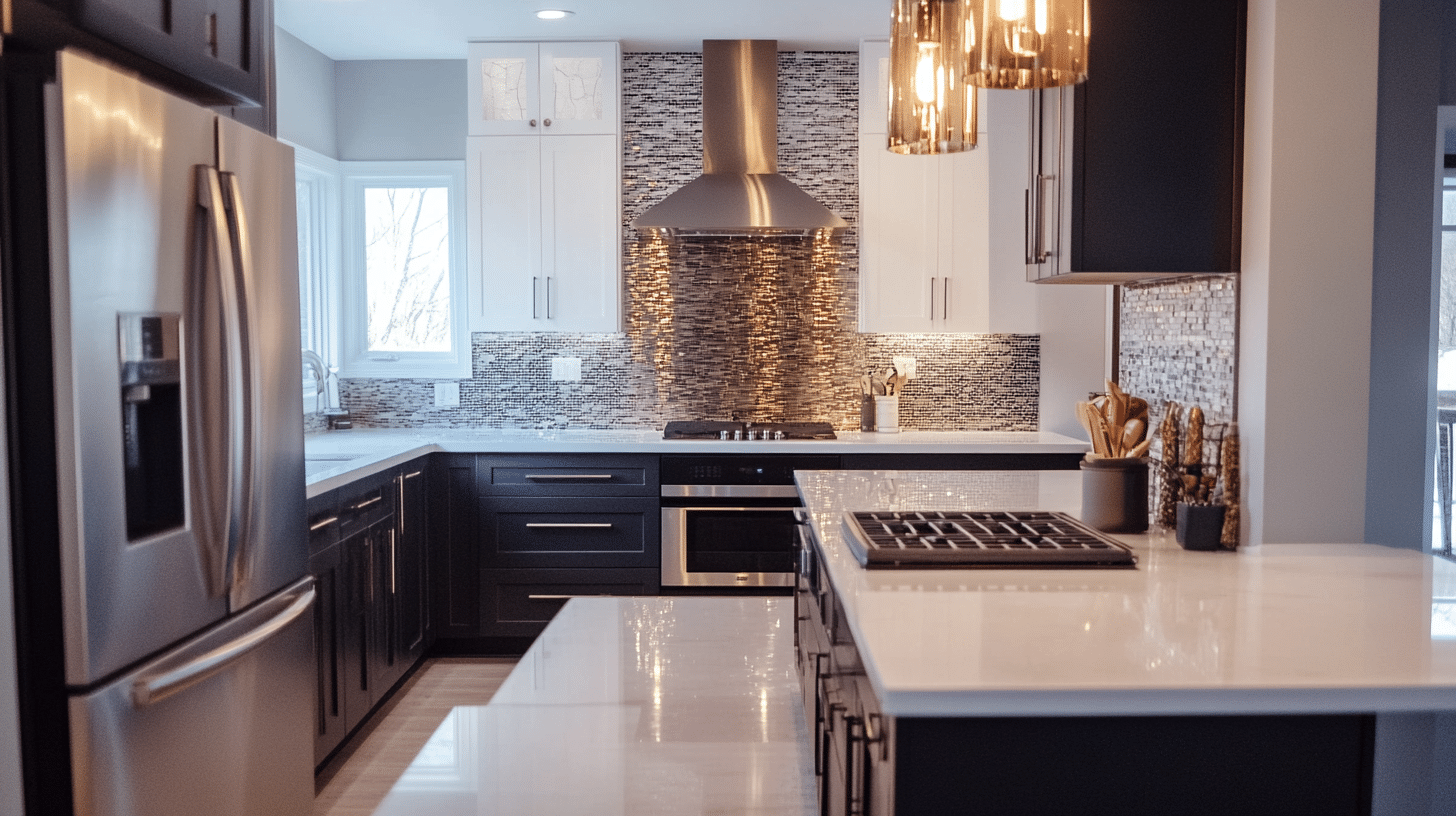
- Start with small changes, such as replacing cabinet hardware with a different metal finish. Look for sales or bulk packs to save money.
- Use spray paint to transform existing fixtures or decor with metallic finishes for a cost-effective update.
- Shop secondhand for unique metal accents at thrift stores, flea markets, or online marketplaces.
- Try metallic contact paper or peel-and-stick tiles to add affordable metallic accents to backsplashes or appliances.
- Opt for metal-look materials that mimic the appearance of metals at a lower cost.
- Focus on one statement piece, like a copper pendant light or gold-toned faucet, to tie the look together.
- DIY decor by creating your own metallic touches using inexpensive materials, like metal leaf-wrapped frames.
These strategies can help you incorporate mixed metals in your kitchen on a budget while achieving a stylish look.
Wrapping It Up
As we wrap up this guide on mixing metals in kitchen design, I hope you’re feeling inspired to try this trend in your own space.
Remember, the key is to balance your chosen metals, consider the overall style of your kitchen, and don’t be afraid to start small.
Whether you’re pairing stainless steel with brass or experimenting with matte black and gold, the possibilities are endless.
I’ve shared my top tips and favorite combinations, but now it’s your turn to get creative.
I’d love to see how you incorporate mixed metals into your kitchen – share your designs or ask any questions you might have.
With a little planning and some design courage, you can create a kitchen that’s uniquely yours and beautifully balanced. Happy designing!
Frequently Asked Questions
Can You Mix Warm and Cool Metals in The Kitchen?
Yes, you can mix warm and cool metals in the kitchen. The key is to choose a dominant metal and use the other as an accent. Spread both metals evenly throughout the space to create balance.
How Many Metal Finishes Should I Use?
It’s best to limit your kitchen to two or three metal finishes. Using too many can make the space look cluttered and uncoordinated. Choose a main finish and one or two complementary ones for accents.
Can I Mix Chrome and Stainless Steel?
Yes, you can mix chrome and stainless steel. They’re both cool-toned metals with similar appearances. Chrome is shinier, while stainless steel has a softer finish.
Should Cabinet Hardware Match Kitchen Faucets?
Cabinet hardware doesn’t need to match kitchen faucets exactly, but it should complement each other. You can use different finishes as long as they have similar undertones or styles. This adds depth to your kitchen design.

